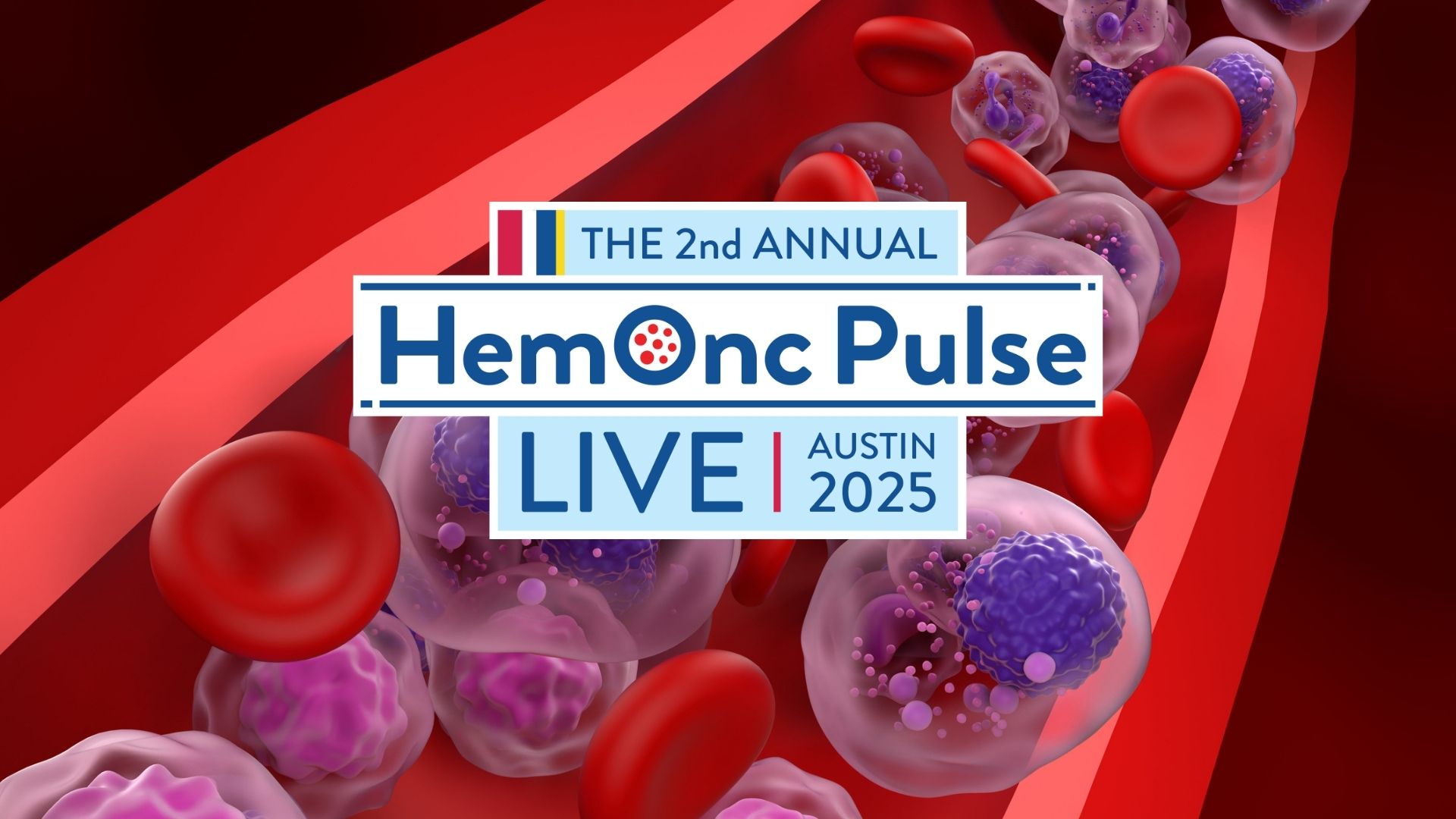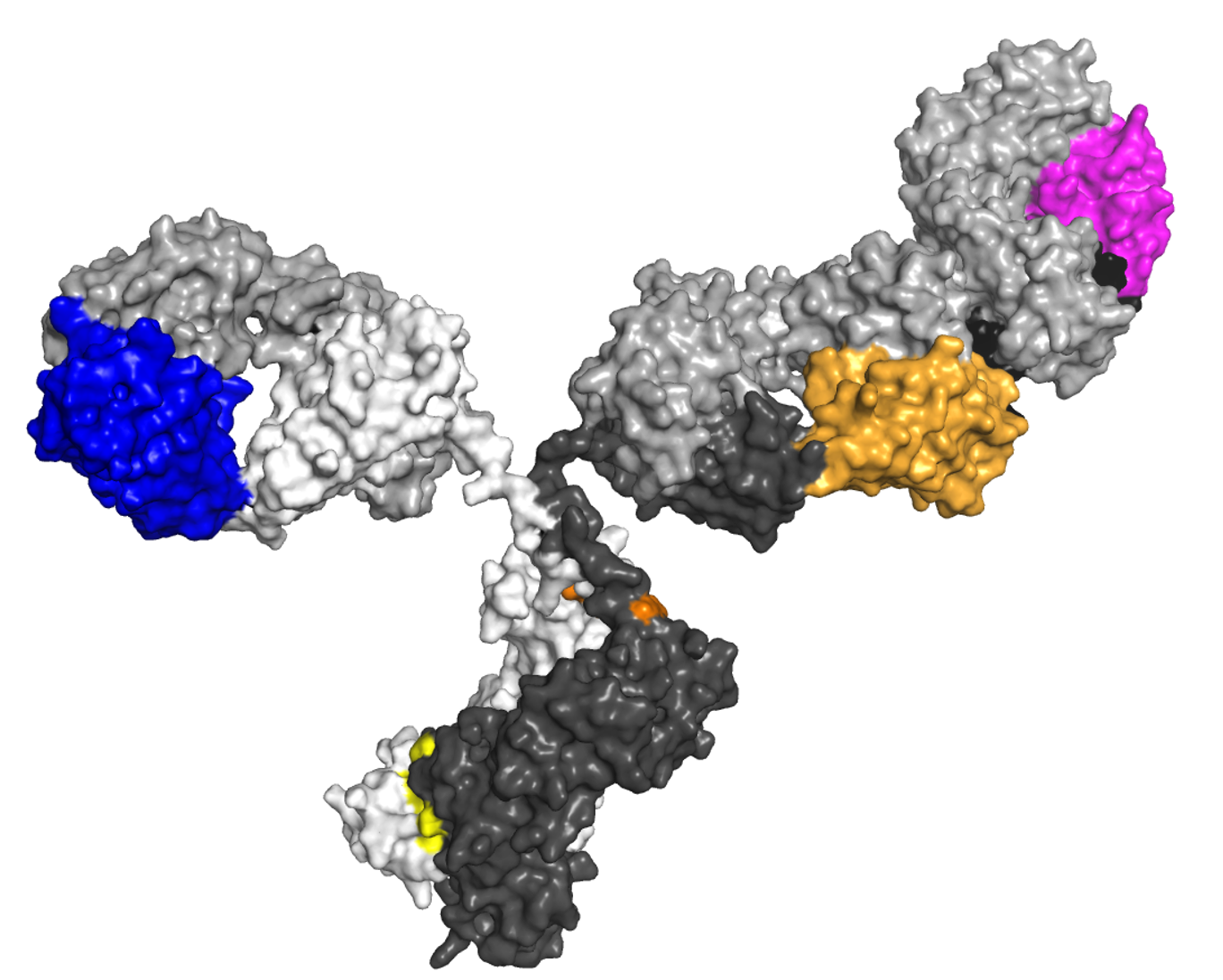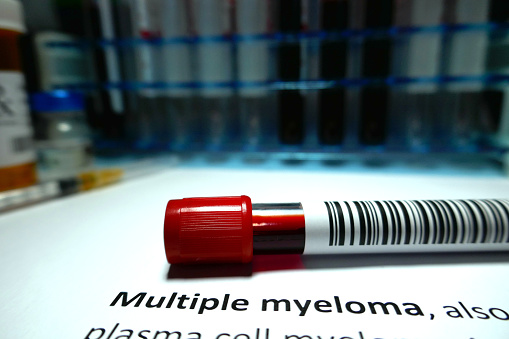
Monoclonal gammopathy of undetermined significance (MGUS) and smoldering multiple myeloma (SMM) are considered clinically silent precursor conditions to MM. The overall risk of progression to malignancy is quite low for MGUS at 1% annually, whereas approximately 65% of individuals with SMM will progress within 10 years of their initial diagnosis.1,2 The terms ‘MGUS’ and ‘SMM’ were first used by MM luminary, Robert A. Kyle, MD, in 19783 and 1980,4 respectively, at a time when relatively little was known about the molecular underpinnings of disease progression. Since then, significant progress has been made in the genomic characterization of myeloma precursors which, coupled with the availability of effective and well-tolerated treatment strategies, has led us to revisit the question of whether screening or earlier intervention will alter the natural history of MGUS and SMM and ultimately reduce MM burden.
Characterized by a low level of abnormal clonal bone marrow plasma cells (PC), the diagnosis of MGUS or SMM requires the presence of a monoclonal (M) protein or excess serum free light chain (FLC) in the absence of immunoglobulin heavy chain expression. Importantly, the symptoms of MM, the so-called CRAB (hypercalcemia, renal impairment, anemia, and bone lesions) criteria, are absent. According to the International Myeloma Working Group (IMWG)’s 2014 diagnostic criteria,5 MGUS is differentiated from SMM based on an arbitrary cut-point of 10% clonal bone marrow PC and serum M protein 3 g/dL Nonetheless, some individuals with MGUS progress rapidly despite their apparent low disease burden, and conversely, many patients with SMM remain stable despite a higher disease burden. The prevalence of MGUS is about 3-5% in people aged 50 years and older, increasing to as much as 9% in those aged over 85 years.6 Because the same ICD codes are used for SMM and MM, the exact prevalence of SMM is not known.
Factors that increase the risk of developing MGUS include Black race, male gender, older age, family history of MGUS and/or MM, immunosuppression, and exposure to certain environmental hazards and radiation; other risk factors have not been identified. Routine screening for M protein in the absence of clinical suspicion is not currently recommended, given the low risk of malignant progression and accompanying emotional burden, and lack of evidence for improved overall survival. The common indications for testing include anemia, elevated total protein, bone-related issues, elevated creatinine, proteinuria, low anion gap, elevated erythrocyte sedimentation rate, and neuropathy. In addition to risk of progression, myeloma precursors can lead to many other problems of clinical significance where a small B cell or plasma cell clone and small M protein affect the kidneys, nerves, or skin. It is important to be able to recognize these conditions and exclude other causes, so that appropriate clone-directed therapy can be given.
Current prognostic models based on disease burden do not accurately predict which patients will progress or when they will progress. If none of the risk factors, M protein greater than or equal to 1.5 g/dL, non-IgG isotype, and abnormal FLC ratio, is present at the time of MGUS diagnosis, the 20-year risk of progression is extremely low at 5%, whereas if all three risk factors are present, the progression risk can be as high as 58%.7 Several risk models are available for SMM that differ in their average time to progression but are not interchangeable when determining meaningful high-risk, medium-risk, and low-risk categories. In 2018, the IMWG presented a new risk stratification model for SMM based on the conventional Mayo Clinic model.8 The IMWG model utilized bone marrow PC greater than 20%., M spike greater than 2 g/dL, and FLC ratio greater than or equal to 20 to define a 20/2/20 SMM risk score. Using these cutoffs, three groups of patients with very different risks of disease progression were identified; those with two or three risk factors were defined as high-risk, with a two-year risk of progression of 50%. However, although these variables capture a snapshot of risk at one time, risk of progression is not always linear; someone with a low risk at diagnosis may convert to intermediate or high risk prior to transitioning to active MM.
Certain chromosomal abnormalities [e.g., del17p13, t(4;14)] that shorten SMM to MM progression have been included in later models to improve risk prediction.9 Next-generation sequencing (NGS) has added a whole new layer to the molecular archaeology of myeloma precursors. Evolving literature based on NGS studies10-12 has defined two distinctive genomic spectra for myeloma precursors, stable versus progressive, with significantly different times to progression. Other alterations within the bone marrow microenvironment and remodeling of host immune system also drive propagation from precursor states to MM. Host immunity is a key determinant that maintains most individuals with myeloma precursors in a stable state via immune surveillance, whereas a switch to immune suppression state facilitates progression to active MM. Distinct immune changes associated with progressive and stable myeloma precursors have been defined.13
Myeloma precursors provide a substrate for early intervention and prevention, whereas full-blown MM represents the endpoint of series of molecular alterations difficult to treat or reverse. Screening studies focused on Black American communities, where MGUS and MM are two to three times more prevalent, are needed to understand the risk factors, biology, and clinical characteristics that are unique to this population. Several trials ongoing in high-risk SMM should answer the question of whether molecular/clinical features known to be linked to progression could provide the basis for early and effective treatment, particularly for those at greatest risk. We hope that ultimately we will have a composite risk score (based on disease burden, genomic and immunologic profile) that will refine disease definitions such that we will no longer refer to MGUS or SMM, but to a myeloma precursor that indicates stable disease that can be monitored and a myeloma precursor linked to progressive disease for which there is definitive treatment.
Disclosures: No conflict of interest to declare for this article.
Author Bio:
Manisha Bhutani, MD, is an Associate Professor of Medicine at Levine Cancer Institute, Atrium Health. She specializes in management of multiple myeloma and other plasma cell disorders. She has a particular interest in development of early-treatment clinical trials for smoldering multiple myeloma, and AL amyloidosis. Her translational research is focused on understanding the molecular and immune mechanisms that promote transition from precursor states of MGUS and smoldering multiple myeloma to frank malignancy. She is committed to improving racial and ethnic disparities in multiple myeloma and related disorders by generating solutions and implementing personalized risk prediction models and treatment strategies for African American individuals. She is a member of the ASH, the ASCO, the International Multiple Myeloma Working Group, the International Myeloma Society, and plasma cell malignancies Steering Committee for the SWOG. She has published extensively in multiple myeloma and related disorders
References
- Kyle RA, Larson DR, Therneau TM, et al. Long-term follow-up of monoclonal gammopathy of undetermined significance. N Engl J Med.2018;378(3):241-249. DOI: 10.1056/NEJMoa1709974
- Kyle RA, Remstein ED, Therneau TM, et al. Clinical course and prognosis of smoldering (asymptomatic) multiple myeloma. N Engl J Med. 2007;356(25):2582-2590. DOI: 10.1056/NEJMoa070389
- Kyle RA. Monoclonal gammopathy of undetermined signifcance: natural history in 241 cases. Am J Med. 1978;64 (5):814–826. DOI: 10.1016/0002-9343(78)90522-3
- Kyle RA, Greipp PR. Smoldering multiple myeloma. N Engl J Med. 1980;302(24):1347-1349. DOI: 10.1056/NEJM198006123022405
- Rajkumar SV, Dimopoulos MA, Palumbo A, et al. International Myeloma Working Group updated criteria for the diagnosis of multiple myeloma. Lancet Oncol. 2014;15(12):e538-e548. DOI: 10.1016/S1470-2045(14)70442-5
- Kyle RA, Therneau TM, Rajkumar SV, et al. Prevalence of monoclonal gammopathy of undetermined significance. N Engl J Med. 2006;354(13):1362-1369. DOI: 10.1056/NEJMoa054494
- Kyle RA, Rajkumar SV. Monoclonal gammopathy of undetermined significance and smouldering multiple myeloma: emphasis on risk factors for progression. Br J Haematol. 2007;139(5):730-743. DOI: 10.1111/j.1365-2141.2007.06873.x
- Rajkumar SV, Kyle RA, Therneau TM, et al. Presence of monoclonal free light chains in the serum predicts risk of progression in monoclonal gammopathy of undetermined significance. Br J Haematol. 2004;127(3):308-310. DOI: 10.1111/j.1365-2141.2004.05169.x
- Lakshman A, Rajkumar SV, Buadi FK, et al. Risk stratification of smoldering multiple myeloma incorporating revised IMWG diagnostic criteria. Blood Cancer J. 2018; 8(6):59. DOI: 10.1038/s41408-018-0077-4
- Mateos MV, Kumar S, Dimopoulos MA, et al. International Myeloma Working Group risk stratification model for smoldering multiple myeloma (SMM). Blood Cancer J. 2020;10(10):102. DOI: 10.1038/s41408-020-00366-3
- Bolli N, Maura F, Minvielle S, et al. Genomic patterns of progression in smoldering multiple myeloma. Nat Commun. 20`8;9(1):3363. DOI: 10.1038/s41467-018-05058-y
- Bustoros M, Sklavenitis-Pistofidis R, Park J, et al. Genomic profiling of smoldering multiple myeloma identifies patients at a high risk of disease progression. J Clin Oncol. 2020;38(21):2380-2389. DOI: 10.1200/JCO.20.00437
- Oben B, Froyen G, Maclachlan KH, et al. Whole-genome sequencing reveals progressive versus stable myeloma precursor conditions as two distinct entities. Nat Commun. 2021;12:Article no. 1861. DOI: 10.1038/s41467-021-22140-0
- Zavidij O, Haradhvala NJ, Mouhieddine TH, et al. Single-cell RNA sequencing reveals compromised immune microenvironment in precursor stages of multiple myeloma. Nat Cancer. 2020;1(5):493-506. DOI: 10.1038/s43018-020-0053-3






 © 2025 Mashup Media, LLC, a Formedics Property. All Rights Reserved.
© 2025 Mashup Media, LLC, a Formedics Property. All Rights Reserved.